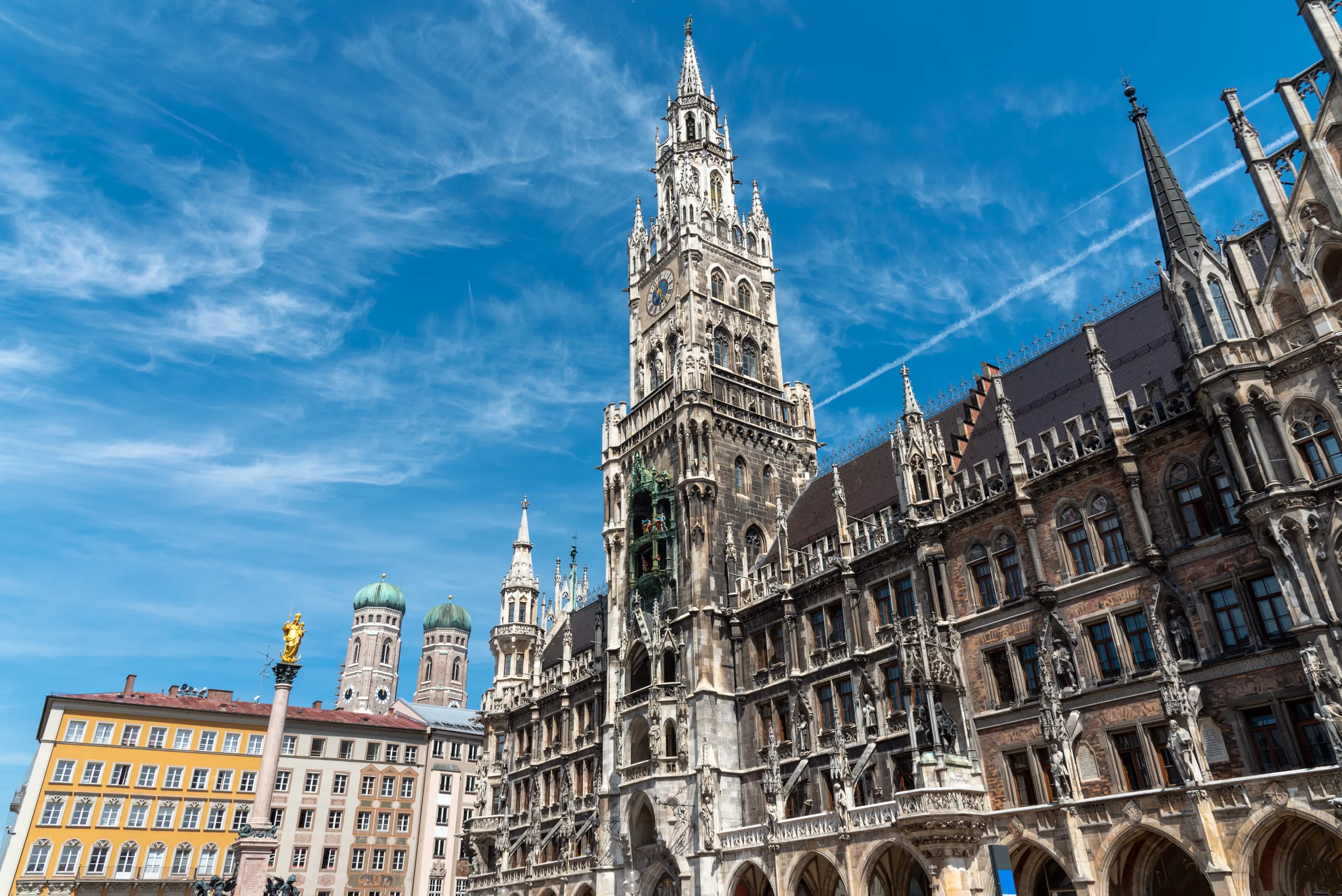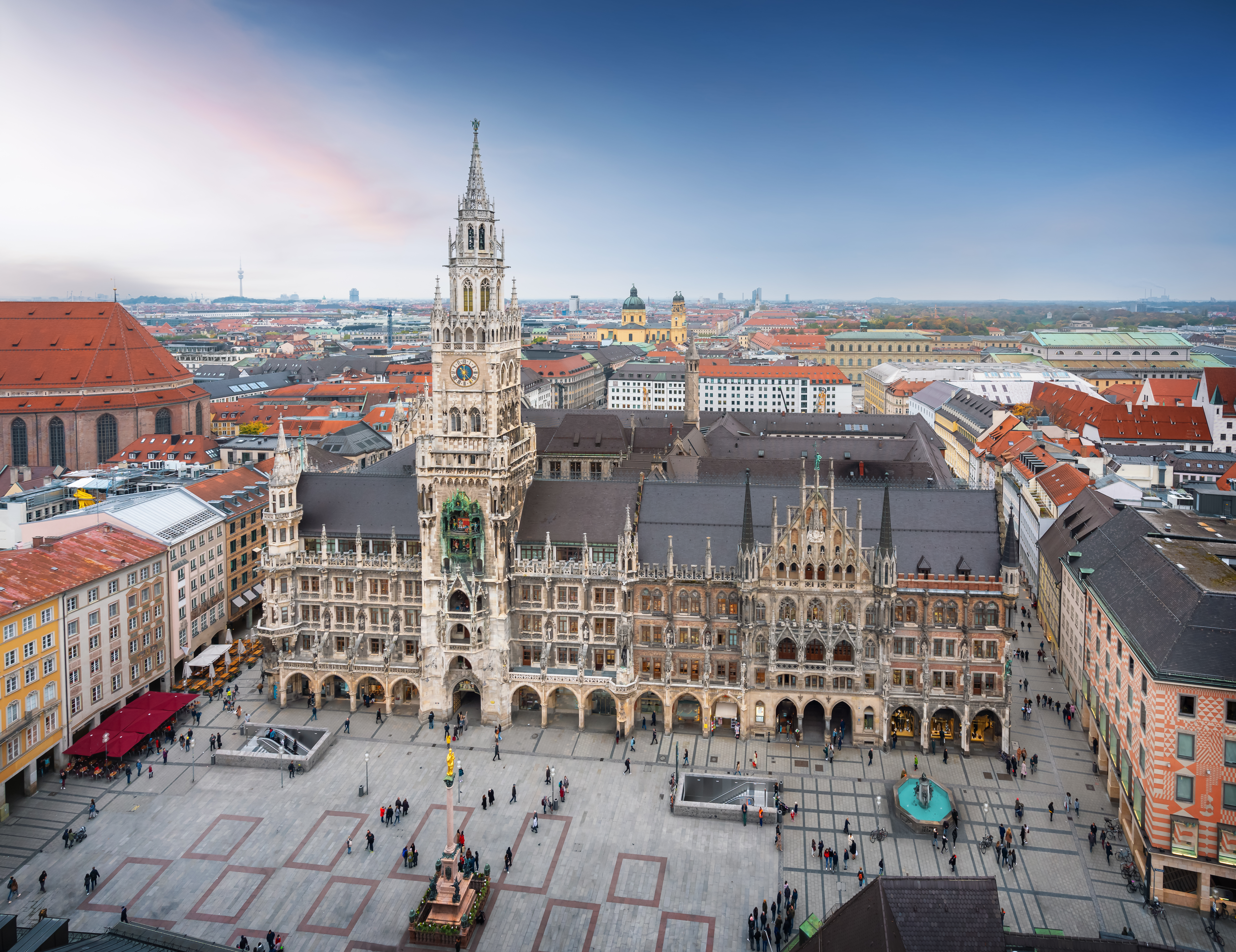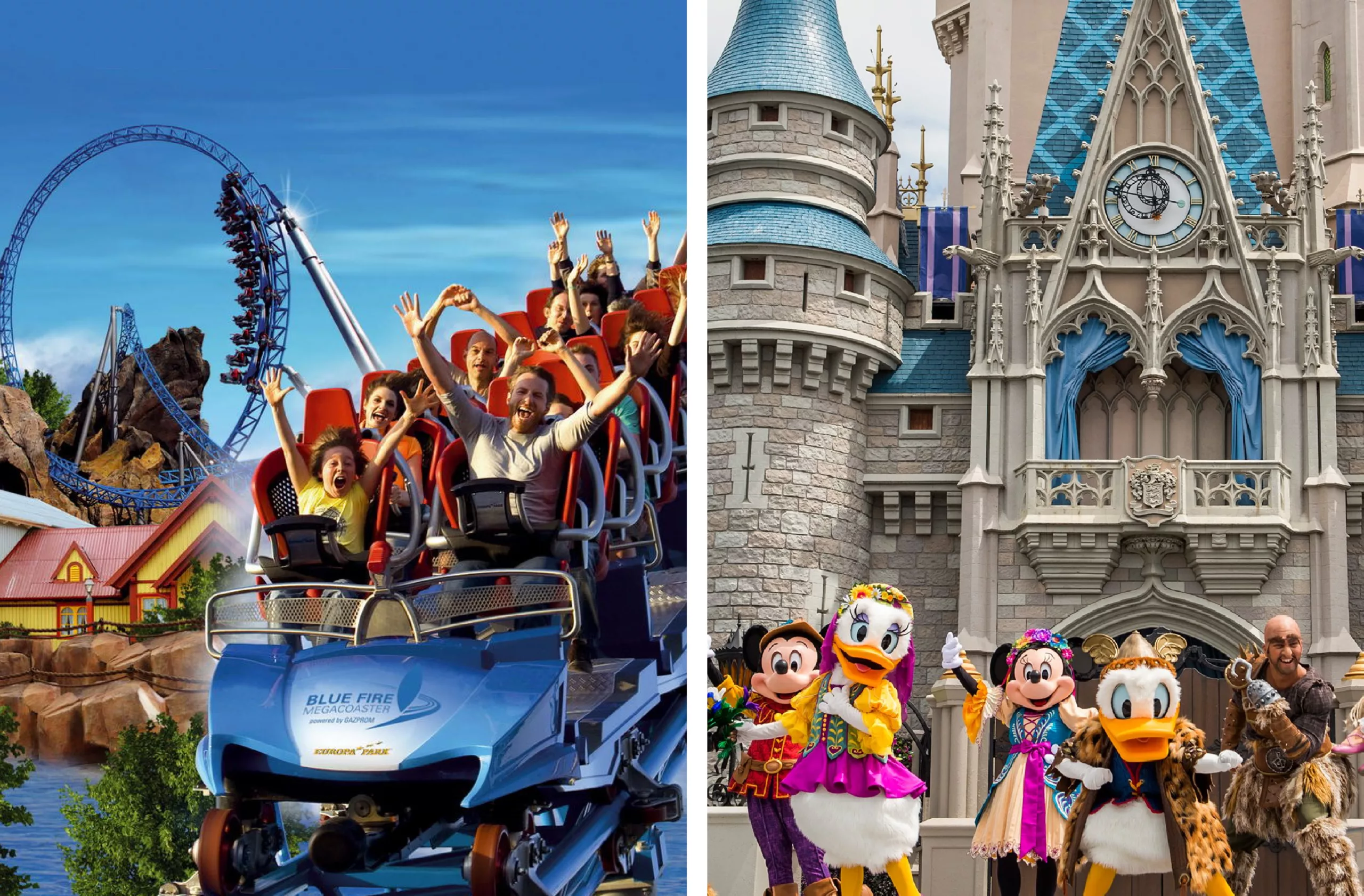Munich’s Old Town – A Historical Walking Tour by Foot
Visiting Munich and only have a short time there? Here are some of the most famous and important attractions in Munich’s Old Town you can see in just one hour on foot. If you love history and art, then this is for you!

Only Have One Hour in Munich? Here’s what to see in Munich’s Old Town
We are lucky that we only live one and a half hours away from Munich. So we took off for a weekend during our fall break (Herbtsferien) to show our four kids the city! In our first two videos, we show you the sights our kids enjoyed, like the palace Nymphemberg, Hirschgarten, and the English gardens. In this video, I take you on a one-hour walking tour of Munich’s old town. I share the rich history of each of these landmarks and show you the parts I loved about them.
Top Landmarks to Visit in Munich’s Old Town
Frauenkirche – The Women’s Church
The Frauenkirche is a Gothic cathedral located in the heart of Munich, Germany. The construction of the church started in 1468 and was completed in 1488. The church was severely damaged during World War II but was restored and reopened in 1952.
The Frauenkirche is significant for several reasons. It is the largest church in Munich and one of the most iconic landmarks of the city. Its distinctive onion-shaped domes, known as “the onion towers,” are visible from many parts of the city. The church is also known for its interior, which features beautiful stained glass windows and impressive artwork. Additionally, the Frauenkirche has played an important role in Munich’s history. It served as the site for many important events, including royal weddings and coronations.
I love visiting old churches all over Europe! They’re free, and you can usually walk right in without cueing in a line (except for St. Peter’s in Rome or St. Mark’s in Venice). Churches are also gigantic living museums full of incredible art and architecture. Many have an interesting history that gives a glimpse into the local culture and customs. And when the weather and crowds outside are unpleasant, churches offer a break from the elements and hustle where you can sit and enjoy some peace and quiet.

Bayerische Staatsoper (Bavarian State Opera)
The Bayerische Staatsoper, or the Bavarian State Opera, is a renowned opera company and theater located in Munich, Germany. It was founded in 1653 and has since become one of the world’s leading opera houses. It is known for its high-quality productions, outstanding singers, and impressive orchestra. The opera company has a rich history, having survived wars, revolutions, and political changes. It has also been home to many legendary performers, including Maria Callas, Plácido Domingo, and Luciano Pavarotti. Today, it hosts a wide range of productions, from classic operas to contemporary works If you can book a performance before you arrive, you’ll really be in for a treat!
The Residenz München, or Munich Residence
Continuing on our tour of Munich’s Old Town by foot is the Residenz München or Munich Residence. It is right next to the opera was a former royal palace. It was built in the 16th century and is one of the largest palaces in Europe. The Residence served as the home of the Bavarian monarchs, the Wittelsbachs, for more than 400 years and is now a popular tourist attraction. The palace complex includes several buildings, courtyards, and gardens, each with its own unique history and architectural style. It houses many impressive collections, including works of art, furniture, and decorative objects. It serves as a testament to the grandeur and sophistication of the Bavarian court. Today, it is a UNESCO World Heritage Site and is considered one of the most important cultural landmarks in Bavaria.
It is so large that it takes 3-5 hours to see everything the palace has to offer!

Peterskirche (St. Peter’s Basilica)
Peterskirche, or St. Peter’s Basilica, is a Baroque church and the oldest parish church in the city. It dates back to the 12th century. While visiting, you must climb its bell tower, where you can enjoy panoramic views of the city. The interior of the church features elaborate frescoes, stucco decorations, and a magnificent high altar. Peterskirche is also used as a venue for concerts and cultural events, in addition, to being a popular tourist destination.
Heilig-Geist Kirche (Holy-Ghost Church)
Heilig-Geist Kirche, or the Holy Ghost Church, is a Gothic church located in the center of Munich’s Old Town. It was originally built in the 14th century as a hospital chapel and has been expanded and renovated several times. Visitors can enjoy its beautiful stained glass windows and impressive wooden altarpiece. Today, the church is a parish church and a venue for concerts and other cultural events. Tourists and locals alike enjoy its striking architecture and rich history, making it a must-see attraction in Munich.

The Old Town Hall and Toy Museum (Altes Rathaus)
The Altes Rathaus, or Old Town Hall, is a historic building located in the heart of Munich’s Old Town. It was built in the 14th century and served as the city’s town hall until the construction of the Neues Rathaus (new town hall) in the late 19th century. The Altes Rathaus is known for its distinctive Gothic architecture, including its tower, which features a clock and a carillon. Today, the building is used for various purposes. It is a wedding venue and the home of the Spielzeug Museum, or Toy Museum. The museum is located on the upper floors of the building and features a large collection of toys and games from around the world, dating back to the 18th century.

The New Town Hall (Neues Rathaus)
The last stop on our walking tour of Munich’s Old Town is the New Town Hall or Neues Rathaus. It is truly the star of the show and the most famous landmark in all of Munich. It was built in the late 19th and is an incredible example of Gothic Revival architecture. The tower facade and ornate gables are a sight to behold! It is the seat of the city’s government and is home to the offices of the mayor and other officials. The building’s central tower houses the famous Glockenspiel. It is a set of 43 bells that play music and perform a mechanical dance every day at 11:00 am and 12:00 pm. Tourists will wait in Marienplatz, the square in from the town hall, to hear the Glockenspiel play. Make sure to tour the inside and vis the observation deck for some panoramic views of Munich’s historic center.
Is Everything in Munich’s Old Town, Actually Old?
The short answer is no. During World War II, in Munich, the Allies bombed and destroyed more than 50% of the city. The bombings targeted the city’s industrial areas and transportation infrastructure, as well as its historic center. Some of the city’s most iconic landmarks, including the Frauenkirche and the Altes Rathaus, were severely damaged or destroyed.
Despite the widespread destruction, Munich was able to rebuild and recover relatively quickly. Reconstruction efforts began in the immediate aftermath of the war and continued throughout the 1950s and 1960s. Many of the city’s historic buildings were meticulously restored, including the Frauenkirche, the Altes Rathaus, and the Residenz München. Today, Munich is a thriving cultural and economic hub, and its rebuilt city center is a testament to the resilience and determination of its residents.

There is So Much More to See than Just Munich’s Old Town!
Make sure to check out our other posts from our trip to Munich when we visited the Nymphemburg Palace and Hirschgarten, and then also the English garden. These are all places families with kids can enjoy in Munich.






